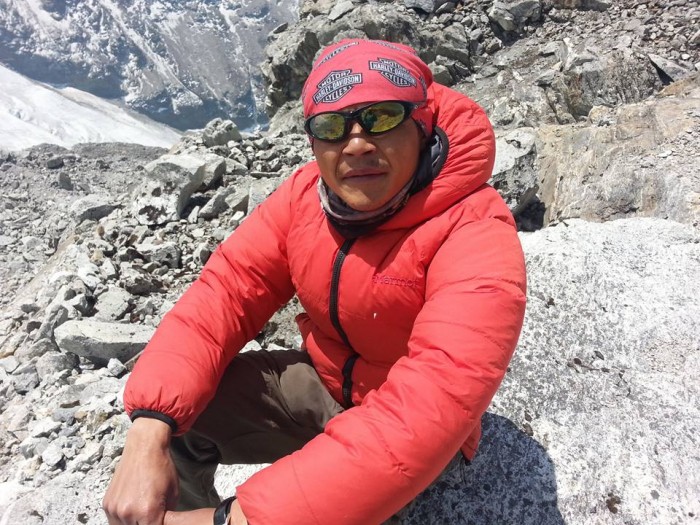If you are an avid trekker or a passionate mountaineer looking to scale one of Nepal’s stunning trekking peaks, Lobuche East Peak climbing should be high on your list. This majestic 6,119-meter peak offers a perfect combination of technical climbing challenges and breathtaking Himalayan views. With its location near the iconic Everest Base Camp (EBC) trail, Lobuche East is a popular choice among climbers seeking a true alpine experience in the Khumbu region.
In this comprehensive guide by Himalayan Adventure International Treks, we explore everything you need to know about Lobuche East Peak climbing—route details, cost, permits, difficulty level, and its connection to other famous peaks like Island Peak and Mera Peak.
Introduction to Lobuche Peak Climbing
Located in the Everest region of Nepal, Lobuche Peak climbing involves two summits—Lobuche East (6,119m) and Lobuche West (6,145m). Of the two, Lobuche East is considered a trekking peak and is more accessible, while Lobuche West is classified as an expedition peak due to its higher technical difficulty.
Lobuche East offers climbers a close-up view of some of the world’s highest mountains, including Mount Everest, Lhotse, Nuptse, Ama Dablam, and Makalu. The peak itself lies close to the route that leads to Everest Base Camp, making it possible to combine a Lobuche East climb with the classic EBC trek or even Island Peak climbing.
Highlights of Lobuche East Climbing
-
Stunning panoramic views of Everest, Lhotse, Nuptse, Pumori, and Ama Dablam
-
A perfect introduction to Himalayan climbing for intermediate climbers
-
Opportunity to combine with EBC with Island Peak climbing
-
Cultural experience in Lobuche village, with its traditional Sherpa lifestyle
-
Adventurous snow and ice climbing experience with rope, crampons, and axe
Lobuche Village Altitude and Route Overview
Lobuche village, the last settlement before Lobuche Base Camp, sits at an altitude of 4,940 meters. It’s a popular stop for trekkers heading toward Everest Base Camp and serves as the gateway for climbers attempting Lobuche East Peak.
General Route Itinerary:
-
Arrival in Kathmandu (1,400m) – Briefing and preparation
-
Flight to Lukla (2,840m) and trek to Phakding
-
Trek to Namche Bazaar (3,440m)
-
Acclimatization Day in Namche
-
Trek to Tengboche (3,860m)
-
Trek to Dingboche (4,410m)
-
Acclimatization in Dingboche
-
Trek to Lobuche village (4,940m)
-
Lobuche Base Camp (5,000m)
-
High Camp (5,400m)
-
Summit Day (6,119m) and back to Base Camp
-
Trek down to Pangboche/Namche/Lukla
-
Fly back to Kathmandu
How Long Does It Take to Climb Lobuche East?
Typically, the Lobuche East climb takes around 18 to 20 days from arrival in Kathmandu to the summit and return. This includes necessary acclimatization days and a potential contingency day in case of bad weather.
If you have limited time, the trip can be shortened slightly by adjusting acclimatization or combining with a helicopter return from Gorak Shep or Lobuche after the climb.
How Hard Is It to Climb Lobuche Peak?
Lobuche East Peak is considered moderately challenging, ideal for those who have previous high-altitude trekking or basic mountaineering experience. While it doesn’t require advanced technical skills, climbers should be familiar with the use of ice axes, crampons, and fixed ropes.
The main summit push involves steep snow and ice climbing at high altitude, often in cold and windy conditions. Good physical fitness and proper acclimatization are essential.
Lobuche East Cost: What to Expect?
The Lobuche East climbing cost can vary depending on the services, group size, and customization. With Himalayan Adventure International Treks, our packages offer excellent value with experienced guides, safety support, and quality logistics.
Average Cost Breakdown (for foreign clients):
-
Group Joining Package: USD 2,100 to 2,500
-
Private Climb: USD 2,800 to 3,200
-
EBC with Island Peak climbing combo: USD 3,000 to 3,600
This includes guide services, climbing gear, permits, meals, accommodations, flights to/from Lukla, and porter support.
Lobuche Peak Climbing Cost for Nepali Citizens
We believe that Nepalese climbers should also have the opportunity to explore the beauty of their own mountains. That’s why we offer special rates for domestic climbers.
Lobuche Peak climbing cost for Nepali:
-
Group joining cost: NPR 90,000 to 120,000
-
Includes: climbing permit, guide, meals, transportation, shared equipment
-
Excludes: personal gear, emergency evacuation
Discounts are available for students and local climbing clubs.
How Much Does It Cost to Climb Lobuche East?
To answer the frequently asked question: "How much does it cost to climb Lobuche East?" — for international climbers, the cost is typically between USD 2,100 and 3,200, depending on whether you choose a group package or a private expedition.
This cost covers logistics, accommodation, meals, permits, guiding, and gear transportation. Additional expenses include tips, personal insurance, extra snacks, and emergency costs.
How Much Is the Permit for Lobuche Peak?
The Lobuche East climbing permit is issued by the Nepal Mountaineering Association (NMA). The permit cost varies based on the season.
Permit Cost:
-
Spring (March-May): USD 250
-
Autumn (Sept-Nov): USD 125
-
Winter/Summer (Dec-Feb, June-Aug): USD 70
Additionally, climbers must also pay:
-
Sagarmatha National Park Entry Fee: NPR 3,000 (approx. USD 25)
-
Khumbu Pasang Lhamu Rural Municipality Fee: NPR 2,000 (approx. USD 15)
Equipment and Gear for Lobuche Climb
Himalayan Adventure International Treks provides all group climbing gear such as ropes, tents, and fixed lines. Climbers must bring or rent their personal climbing equipment, including:
-
Mountaineering boots (double insulated)
-
Ice axe
-
Crampons
-
Harness
-
Helmet
-
Down jacket and sleeping bag
-
Climbing gloves and warm socks
Gear rental is available in Kathmandu at competitive rates.
Comparison with Other Popular Peaks
Let’s compare Lobuche East Peak with other popular trekking peaks in Nepal to help you choose the right adventure.
1. Mera Peak Climbing
-
Height: 6,476m (highest trekking peak in Nepal)
-
Difficulty: Less technical than Lobuche East
-
Mera Peak climbing price: USD 2,000 to 2,800
-
Suitable for: High-altitude trekkers wanting non-technical summit
2. Island Peak Climbing
-
Height: 6,189m
-
Difficulty: Comparable to Lobuche East
-
Island Peak cost: USD 2,000 to 2,600
-
Perfect for: Climbers combining with EBC trek
3. EBC with Island Peak Climbing
-
Combines the classic Everest Base Camp trek with a high-altitude climb
-
Cost: USD 3,000 to 3,600 depending on group size and services
-
Great option for those who want to mix trekking and technical climbing
If you're still deciding between Lobuche East, Island Peak, or Mera Peak, our experienced team can guide you in choosing the most suitable peak based on your fitness, time, and goals.
Why Choose Himalayan Adventure International Treks?
As a leading expedition company in Nepal, Himalayan Adventure International Treks Pvt. Ltd. is committed to providing safe, professional, and unforgettable climbing experiences.
What Sets Us Apart:
✅ Experienced Climbing Sherpas with IFMGA certification
✅ High Safety Standards with satellite phones and medical kits
✅ Affordable Rates for both international and Nepali climbers
✅ Customized Itineraries for private and group expeditions
✅ Community Support – Every booking contributes to local employment and sustainable tourism
Our past climbers have returned for multiple adventures, thanks to our personalized service, responsible guiding, and high summit success rate.
Lobuche East Peak climbing offers everything an adventurous soul could ask for: breathtaking views, moderate technical challenge, rich culture, and a sense of real Himalayan achievement. Whether you're a seasoned mountaineer or an ambitious trekker looking to take the next step, this peak is a gateway to experiencing the grandeur of the Everest region.
With expert guidance from Himalayan Adventure International Treks, your dream of standing atop a Himalayan summit is closer than ever.
Ready to Climb?
📞 Contact us today to book your Lobuche Peak climbing trip or to learn more about our combo packages like EBC with Island Peak climbing.

 Plan Your Trip Now
Plan Your Trip Now 


